Ranomafana National Park is one of Madagascar’s oldest and most visited nature reserves. It covers 161 square miles of pristine tropical rainforest at an average elevation of 1000 meters in Madagascar’s central highlands. It is accessed from the homonymous village of Ranomafana which can be reached within a long day’s drive from Antananarivo. It was established in 1991 following the rediscovery of the then-thought-extinct greater bamboo lemur and the initial discovery of the golden bamboo lemur by the renowned American primatologist Patricia Wright. In addition to them two, the park hosts eleven more species of lemur as well as a multitude of reptiles, birds, insects, and plants of which several are endemic. We naturally set our sights on it during our 2023 road trip in southern Madagascar.
From Morondava to Ranomafana with an overnight in Ambositra
We left Morondava at 6 am for what became the longest day drive we undertook during the entire road trip. Stopping only for breakfast, lunch, and a couple of pees, we drove nonstop all the same long way we’d driven two days ago from Antsirabe and carried on for an additional four hours. At around 10 pm, after 16 hours and 600 km of bouncing over potholes, we arrived in the night-shrouded town of Ambositra. After a nice meal and a beer at a small restaurant owned by a college mate of Tahina, our driver, we checked into a cute and cheap hotel on the outskirts and collapsed until dawn.
Since for this day we had a mere 7-hour drive, we let Tahina recuperate from yesterday’s feat while we went for a morning stroll. Farmers and pupils were walking along the road to their rice fields and schools, all staring at us in disbelief. We had breakfast at a little home eatery. The whole family assembled to inspect us. It apparently was their first time seeing whites from that up close. By around 9 am we were on the road.
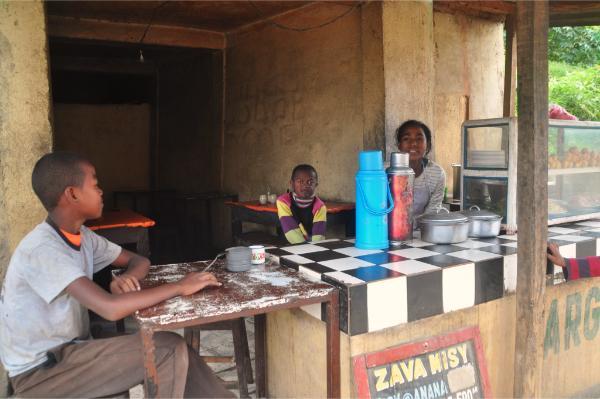
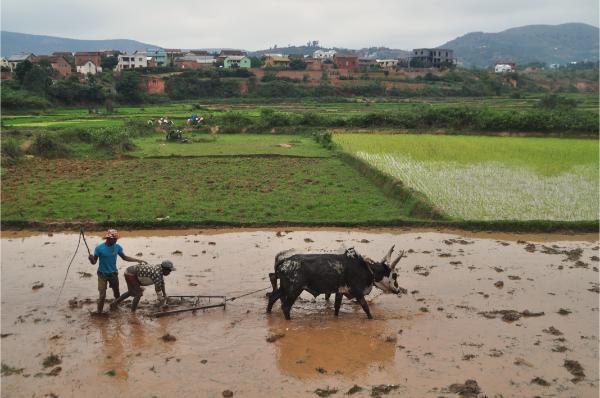
After we left the main road and headed down the eastern slopes of the mountain range, the landscape changed very suddenly. By the time I raised my gaze again after a few book pages, the plantations and conifer groves of the highlands were replaced by endless, lush rainforest. Someway down a steep valley, we at last arrived in Ranomafana village.
Affiliation disclosure: By purchasing goods or services via the links contained in this post, I may be earning a small commission from the seller's profit, without you being charged any extra penny. You will be thus greatly helping me to maintain and keep enriching this website. Thanks!
Accommodation in Ranomafana
We settled in a lovely guest house called Chez Gaspard. They had several neat bungalows in a beautiful garden, an exquisite kitchen, and pleasant staff. It didn’t take longer than entering our bungalow to get a first glimpse of the local wildlife. We shared the room with a family of bright-green geckos that ranged in size from half my forearm to double my thumbnail. Good roommates: cute, discreet, quiet, and possibly eating mosquitoes.
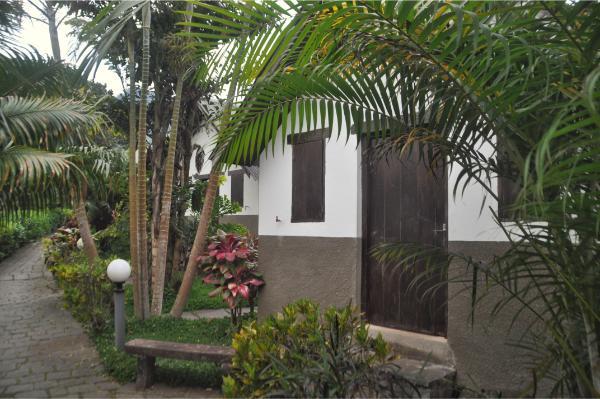
A stroll in Ranomafana Village
We soon headed out to see the village. Besides its verdant surroundings, it felt quite unlike the rest of the country in terms of character. Owing to tourism, it was more developed and well-off. As foreigners, we weren’t as much of a curio and hardly a target for accosting. We made a round of the village, played football with two sociable toddlers, sat in one of many nice eateries for a beer and dinner, and went to rest before our morning trek.
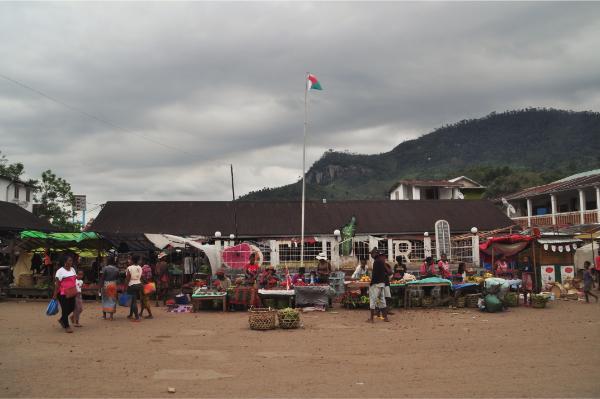
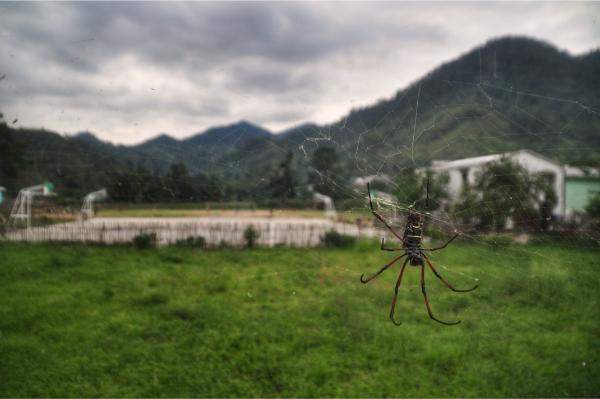
Ranomafana Village Photo Gallery
View (and if you want use) all my photographs from Ranomafana Village.
Ranomafana National Park tour
The entrance of Ranomafana National Park is a 15-minute drive on the road west out of the village (coordinates: -21.2557, 47.4213). We were there before 8 am to meet Patrick, our predictably named local guide. He was knowledgeable, friendly, and the best English speaker we’d so far met in the country. Here’s his Facebook if you want to get in touch.
There was a small restaurant, a souvenir shop, and of course, the ticket office. The entry fee came to 55,000 ariary per person plus 5,000 for some tax of sorts that we paid in another booth someway down the path. Regarding the guide fee, they had a few tour options for different lengths and specialties (primatology, ornithology, herpetology, botany…). We took the standard 4-hour tour, which was the second cheapest option and came to 120,000.
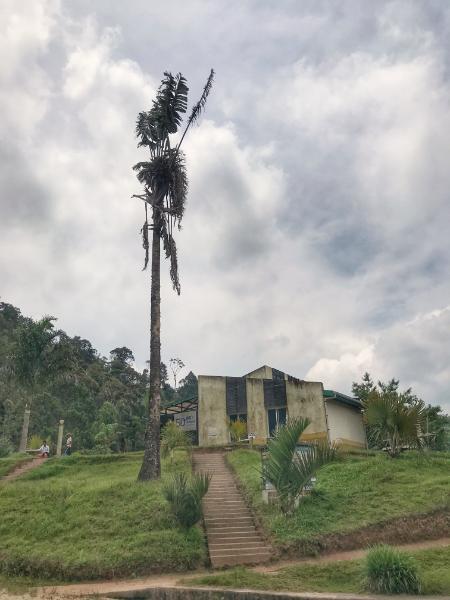
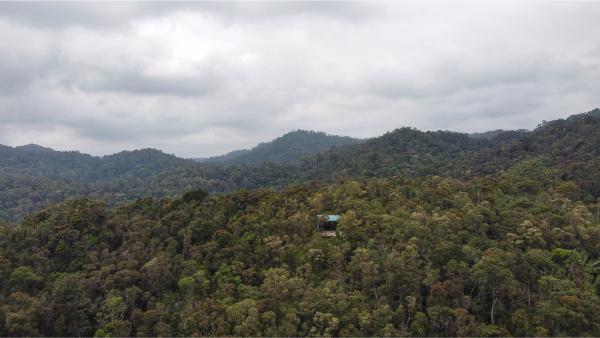
Five minutes into our hike, we saw the first animals. A short downhill path led us to a bridge that crossed the river to the main part of the park. Just before getting off to the other, we ran into a troop of red-bellied lemurs. They are named after the males’ reddish ventral hue that differentiates them from the females’ white. The overall color of both genders is brown. We could only get flitting glimpses of them as they lurked within the thick foliage off the edge of the bridge. And at first I thought that that would be the best we would get. But then Patrick prompted us to withdraw back to the start of the bridge, as they might intend to cross. Indeed, they weren’t that shy after all. One after the other, the whole troop emerged from the thicket and, skillfully balancing on the rail, a mother carrying a baby aback, they scurried to our side, passed a meter beside us, and jumped off to wherever they were going. It was amazing to watch them.
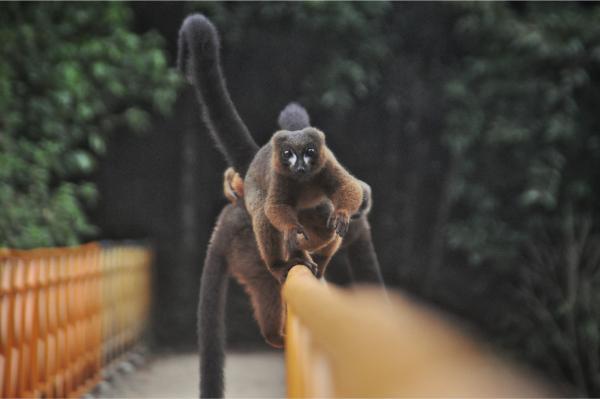
For seeing the next lemur species, it took quite longer and a good deal of scouting. There also was that other guy with us, whom Patrick introduced as his assistant, who was going ahead searching for the lemurs. Eventually, he called out, and we dashed through the jungle toward him. He had spotted a golden bamboo lemur.
He was alone, hugging a bamboo log in the privacy of an underbrush. We were the first to find him, but the information of his position spread quickly through the forest, gathering everybody present, some twenty people tourists and guides, in a tight circle around him. He didn’t seem to bother. He’d now and then cast up a gaze, if someone was getting closer, but as for the rest, he was carefree and focused on peeling his bamboo, one layer at a time, until he reached the white pulp inside. Then he hopped onto a branch and perched there munching in bliss.
They’re called bamboo lemurs not because they climb and jump between bamboo trees, as one might have thought and I did think, but because they eat them. Other lemurs and most animals, including ourselves, would be dead in minutes were they to ingest the cyanides that the Madagascar Giant Bamboo contains.
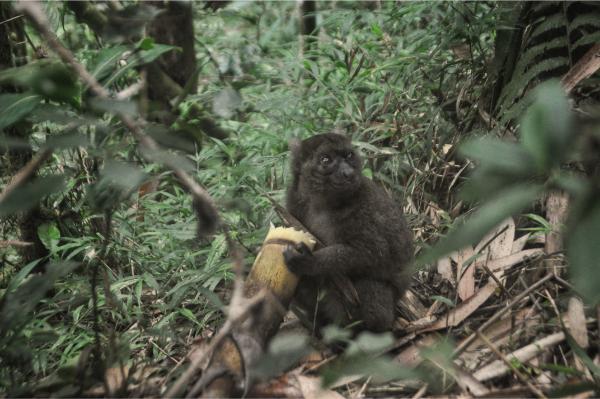
The other bamboovore lemur species that exists in Ranomafana is the greater bamboo lemur. If you’re reading this post a few years after its publication, you’d probably need to substitute the tense of exists for existed. At the time of our visit, there was only one female individual left. Her father, the penultimate greater bamboo lemur of Ranomafana, had recently gone missing. As a mitigating epilogue to the lineage’s sad story, at least she was accepted into a troop of her golden cousin species and wasn’t alone.
We saw two more lemur species: a pair of the nocturnal Peyrieras’s woolly lemur, fast asleep in a cuddle high up a tree bough; and a bunch of Milne-Edward’s sifaka lemurs, gracefully springing from tree to tree.
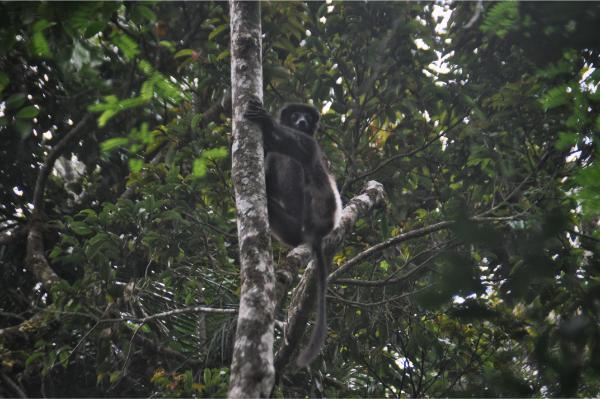
Besides primates, we saw several other interesting creatures: a tiny frog hiding inside a bird nest (frankly, I wasn’t convinced of his concealment tactics; if I were a bird of prey, the nest would be the first place I’d look in for eggs); a snail the size of a brick; a spider the size of my palm devouring a bug in the center of her web; stick bugs, leaf-footed bugs, fluorescent dung beetles, and spittlebugs so-called because they shelter within their foam-like spit; and various birds such as a hook-billed vanga and a Madagascar bulbul.
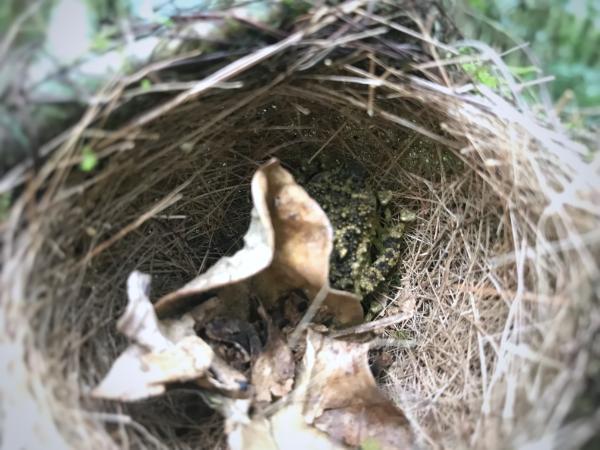
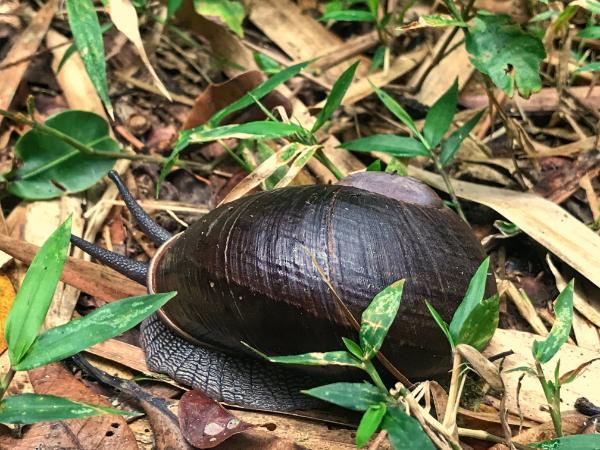
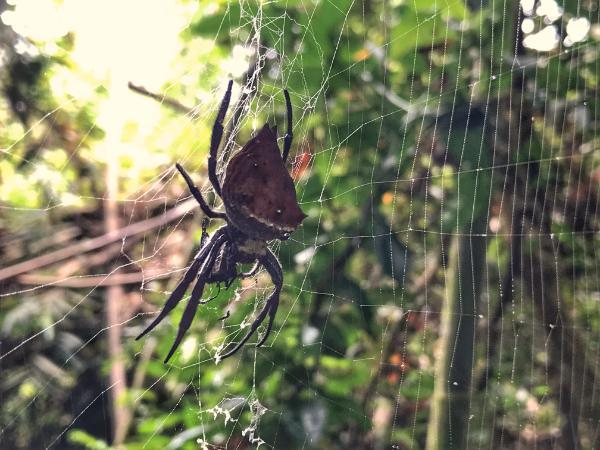
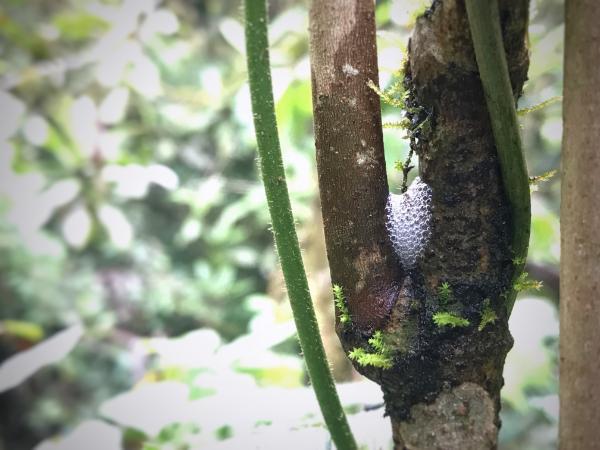
After some rest at a viewpoint that overlooked nothing but the green of jungle and the grey of sky, we were back in the village by early afternoon. We relaxed and got ready to depart for the Isalo National Park the next morning.
Ranomafana National Park Photo Gallery
View (and if you want use) all my photographs from Ranomafana National Park.
For this road trip we were sorted out by Patrick from MadaRentalACR. He fixed for us a flawless and comfortable 4x4 together with the driver for the most reasonable price we were able to find and he was overall very helpful and accommodating. Our driver, Tahina, was very professional and an excellent company during our two-week wandering. You may contact him on Facebook if you're looking for a trustful driver/guide in Madagascar.
Accommodation and Activities in Madagascar
Stay22 is a handy tool that lets you search for and compare stays and experiences across multiple platforms on the same neat, interactive map. Hover over the listings to see the details. Click on the top-right settings icon to adjust your preferences; switch between hotels, experiences, or restaurants; and activate clever map overlays displaying information like transit lines or concentrations of sights. Click on the Show List button for the listings to appear in a list format. Booking via this map, I will be earning a small cut of the platform's profit without you being charged any extra penny. You will be thus greatly helping me to maintain and keep enriching this website. Thanks!
